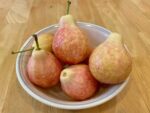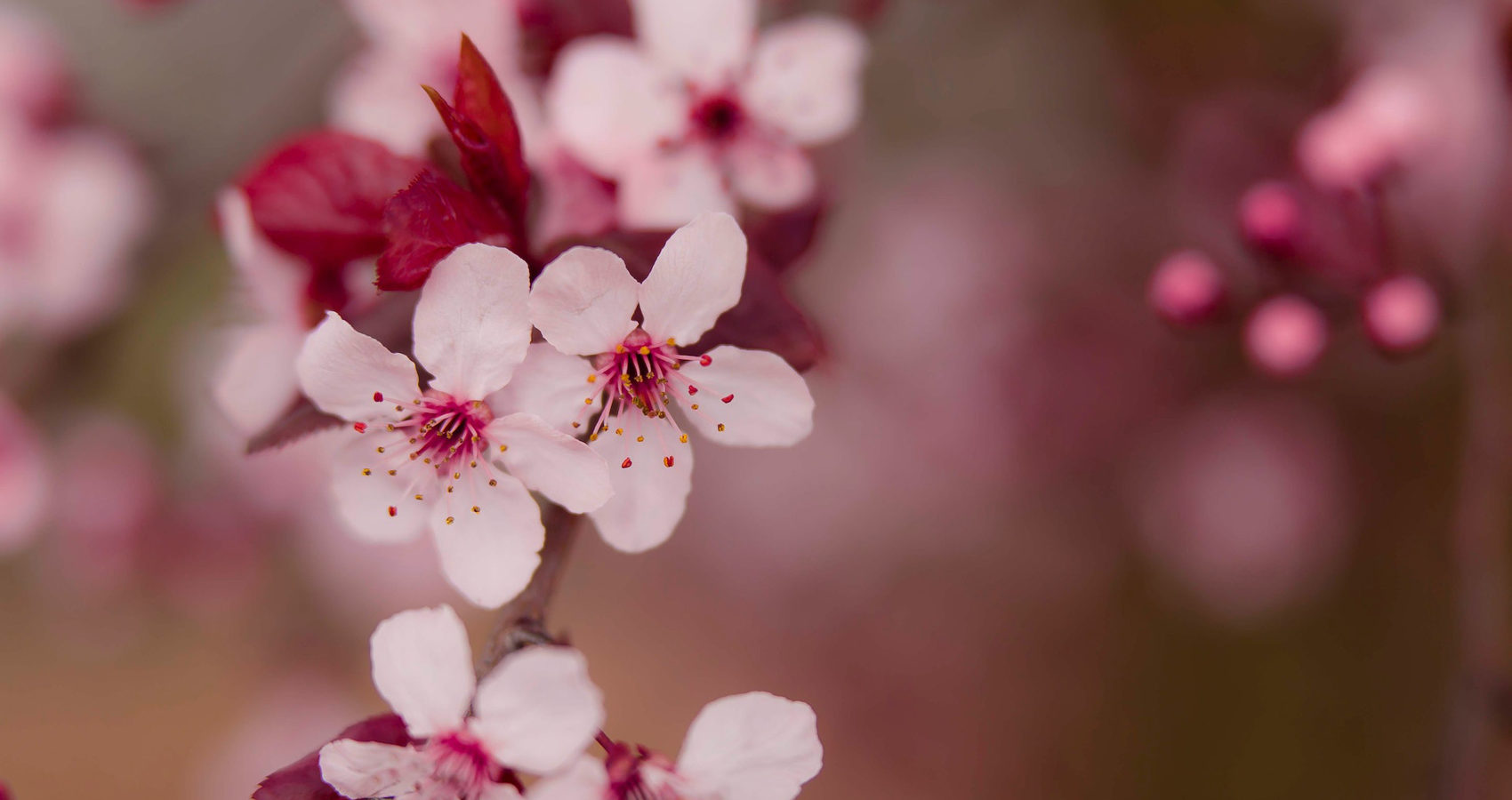Still No Guava
written by: Erica Lin
Home is a spunky house painted slate gray, a cute cross between forest cottage meets ranch architecture that is quintessentially Bay Area. Home also sits smack dab in the middle of an endless row of other two-story siblings, and has about as much unique character as a house conjoined with thirty-five other carbon copies can have. Each clone features a front yard enclosed by the same white stucco walls and iron railing piped on top. The only visible difference is that, as my street slopes upward on one end, the yard walls grow taller and eclipse more of the family dynamics they guard. Now, if I drive past quickly, it’s like watching all of my yesterdays blur together on fast forward.
***

Home is the first home that I can really remember, but it isn’t the first home in their new home for my parents, who came from Taiwan to America for graduate school over thirty years ago. As my parents squished into tiny apartments as new students in Los Angeles and Virginia, then less tiny apartments in Colorado as new employees of the high tech bubble, and eventually apartment without the “tiny” in the Bay Area as new parents — they always took care to appreciate home, while keeping a tentative eye out for the next.
When I was four, ten years after my parents had left Taiwan, we moved into what has become, for now, our final home of homes. For Dad and many neighbors like him, he found the meaning of “final” to be quite clear-cut — to one day settle down in a home both cozy and spacious, built by a never-bending drive while blending in.
Mom found the concept to be much less straightforward, and for her, home had an ever-evolving life and personality of its own. Part of this probably stems from the fact that, underneath her calm and practical demeanor, she is a true romantic at heart. She grew up with a deep love for the classics, one that she also shared with me from early on. Although the characters had Mandarin names for her and English names for me, as a kid, I spent many an afternoon chattering on and on with her about the books we had been reading for fun. I also loved hearing Mom talk about how as a kid, one of her rebellious streaks would be to secretly stay up way past her bedtime, flipping through book after book. She found herself constantly drawn to the image of bright-eyed Tom Sawyer or Atticus Finch running around and making mischief, chasing squirrels, and just being whoever and however they wanted to be in the comfort of their backyards, front lawns, or even side woods. I found myself drawn to these same stories too, which we both chalked up to a mutual love for the fast-paced action, for the thrill of the plot. It wasn’t until years later that I realized there might be something more about the pull these stories had and still have on us.
***
If I were to close my eyes and picture what home looks like, the first thing I’d see is our front yard. Structurally speaking, our yard of today has not really changed from how it had seemed when we first moved in. A centered iron gate marks the only entrance into the rectangular expanse walled off by prickly white stucco. About the size of a cozy coffee shop, the space is tiled throughout by a sea of large terra cotta squares the color of a defiant sunset, save for a cloudy gray sidewalk bisecting from gate to front door in one bold, centered stroke. These tiles criss-cross in a neat grid of shallow cracks that like to hoard pollen in spring, small leaves in fall, and roly-polys all year round. And in the two outer corners closest to the gate, as well as on either side of the walkway, sit flowerbeds the shape of generous quarter sliced pie and crimped with brick crust.
But aesthetically speaking, our yard of today is far from the same, having morphed from a tabula rasa of dirt to a dynamically, ever-repainted canvas. During our first summer, Mom pitched to Dad and me what would become a seventeen year journey to create her dream yard. While Dad wasn’t super convinced of its merit (“but won’t the plants just die in winter?”), I was her eager four year old accomplice, willing to get my hands and fingernails and curiosity dirty. We began first with flowers for the Walkway Pie Slices, a whim of a project that soon morphed into our yearly spring field trip to pick out our newest friends from the local nursery. Like mother, like daughter, we two optimists blissfully ignored any practicalities behind the distinction between annuals and perennials and trusted our gut feelings for blossoming fireworks that caught our eyes and pulled our hearts in. Petunias as bright as gold, geraniums blushing pink, patterned zinnias exploding like Pollock paint splotches, and daisies with happy-go-lucky attitudes cropped up year after year, with some deviants here and there to spice things up. The two of us were always deeply disappointed when our seasonal visitors waved goodbye in the fall and Dad had chipped in his annual joking “told ya so,” but we still kept on replanting. Only by sheer luck, in the last year of Mom’s floral craze, we happened to plant perennial lavender shrubs whose motherly purple wisps still continue to pop up every August, watching over our day to days with a peaceful eye.
When Mom and I tired of the constant flower-searching and fingernail-scrubbing, we adopted bushes as our next and more hands-off project instead. We carefully planted our first one underneath the dining room window: a baby rose bush that turned all sorts of concerningly sickly shades in its first year, but grew like an electric shock of uncontrollably unruly hair ever since. To this day, every month or so, we always have to do some convoluted, almost ritual-like dance around its thorns to give it a trim. But when we’d forget, which was more often than not, a thick vine would try to scale up the slate gray of my house, adding green and bubble gum pops of color to the wall. After confirming that our green thumbs were still passably intact, we plopped in three more quirky bushes in the flowerbed underneath the sleek living room windows that still thrive today. There’s the droopy bush, its curly finger-like green leaves sagging downward like the hair on a Samoyed in desperate need of a haircut. There’s the fire bush, whose shockingly red leaves press up against the windows to conjure an illusion of ever-licking flames. And there’s my favorite, the positively chaotic bush with its uncontrollably long branches that shoot up and out and left and right, like water spraying from a defunct sprinkler tripped over and snapped in half.
With time, we added more and more buds and bushes of beautiful colors spanning all across the rainbow. It wasn’t noticeable until several years in, but Mom always squeezed the newest additions into the few already thriving flowerbeds, somehow managing to make more room from no room while leaving the empty ones as is. By the time my Taiwanese grandparents visited our final home for the first time, the two outermost corners closest to the street still remained bare. Up until then, my eleven year old self neither knew why, nor thought enough of it to ask. Yet Grandpa took one look at his daughter’s carefully constructed life and somehow knew why. He brought an idea with him too: to plant his favorite trees, tea flower and guava, both ubiquitously loved in Taiwan even if less common across the Pacific. Mom and I were thrilled; Dad was a bit more pessimistic and practical, citing tropical Taiwan to be a far cry from the mild Bay Area, but dutifully scrounged up the seeds anyway and good-naturedly wished us luck. One sunny summer afternoon, Grandpa, Mom, and I dug two holes, plopped in our roots, and crossed our fingers.
***
From the beginning, this yard has been my own experimental sandbox as much as it has been Mom’s. Tasked with watering the yard, I quickly settled into a comfortable routine: rose bush, then flower pie slice #1 and #2, before swinging over to droopy and fire and broken sprinkler bush, and in later years, rounding out the protocol with the two trees. As an only child, I loved the freedom to play in the yard without supervision as it opened up a whole new world of secrets that I could discover even on my own. The yard’s tile crevices are not very fun to accidentally scooter into, but are perfect for creating frames of chalk comic strips or playing horseshoes with hula hoops; the best way to rid stucco walls of cobwebs from patient spiders is by twig, because as fun as hoses are, I always end up spraying a miffed passerby instead; the list goes on and on.
Over the years, as the yard grew in its bud and bush population, so did I, and my view of the community around me with it too. When I was old enough to venture up and down the street as I played, I also spotted yards that made my street a lot less rigid and a lot more dynamic than meets the eye. To this day, there is a yard with delicate Vietnamese star anise clinging to the railing, and a swath of rooibos whose tea leaves envelop any passerby on a nighttime stroll in their warm embrace, and a lemon tree brought by a multi-generational family of farmers, and kale grown by the New Yorker single mother who wryly embraces the “yoga mom” aesthetic. My home marks not just the epicenter of my street’s blend of old and new, but also of a row of twenty city-planted Japanese plum trees lining the sidewalk. Growing up, they always blossomed vigorously for four fleetingly romantic days in otherwise dreary Februaries, and I loved to lie underneath and stare up at a sky gently snowing dusty pink petals.
***
Only recently, after leaving home for my first home away from home, have I started to piece together why Mom and I found so much in our yard. On the outside, it hadn’t seemed to take long for her to craft an adequate yard for our family. But on the inside, I think my parents had still been grappling with how to embrace the Taiwanese alongside the American in Taiwanese American. As strong leaders and good-natured people, they try not to let it show. Still, I can sometimes sense that despite having called this place home and flown with bald eagles perched atop their passports for all these years, they may still be self-conscious, especially for their accents if they happen to be the only people of color around.
I felt this sort of tug of war too, particularly after starting college. On the outside, it also hadn’t seemed to take long for me to find my place on campus, what with new friends, new clubs, and a new learning environment I loved. But on the inside, I felt like I didn’t always fit in. Like I was some exotic specimen, for my post-break stashes of Taiwanese snacks, my confusion over fork and knife placement at fancy dinners, my proposed but dropped no-shoes-indoors policy. Like the interweaving of cultural identity with supposed standard American identity, something so commonplace in the diverse Bay Area community I love and call home that I had never thought of it as a privilege, was something I had to actively find. Like I was seeing myself, for the first time ever, as not simply American, but always Asian in front of the American — as how others in society will always first see me to be.
True to their strong and good-natured selves though, my parents have also made subtle yet resolute promises to how as well as where they’ve put down their roots. Roots in the red Mazu medallions we hang in our cars as blessings for safety, the tang yuan we hand-roll for the Winter Solstice. Roots in the values for community and resilience and courage and justice that they’ve taught me to uphold, whether biting back at xenophobic insults in public or at model minority stereotypes on Yale or Hopkins campus. Roots that link a love between Mom and Dad and me through the phone as I call home once a week, as if they were in the room to cheer on my confused but increasingly confident college and now medical student self.
Roots that make the journey of growing into a community for Dad, growing a yard for Mom, and growing up for me — a lot less homogeneous, and maybe a lot more meaningful because of it.
***
Dad was right about that guava tree. For the longest time, no matter how much I watered it or what my mom coaxed it with — magical fertilizer, words of encouragement, frustrated threats to chop it down — the tree stubbornly refused to bear fruit of any considerable size. Every year, Grandpa would call and ask if we’d been able to taste a guava yet. And every year, up until I left for college, we’d laugh and switch topics, as I kept on watering.
One wintry February day in college, I picked up a spontaneous call from Mom as I trekked through slush back to my dorm room. As my mom’s excited voice filled my ear with quick breaths of “plum blossoms!” and “our street!” and “finally here!” I stopped to look up at the barren, droopy trees above, and could almost imagine the Japanese-turned-Californian plum blossoms shivering on bare but brave Connecticut branches. “But what about the guava?” I asked. And with a growing smile, I laughed.
- Still No Guava - June 29, 2023



